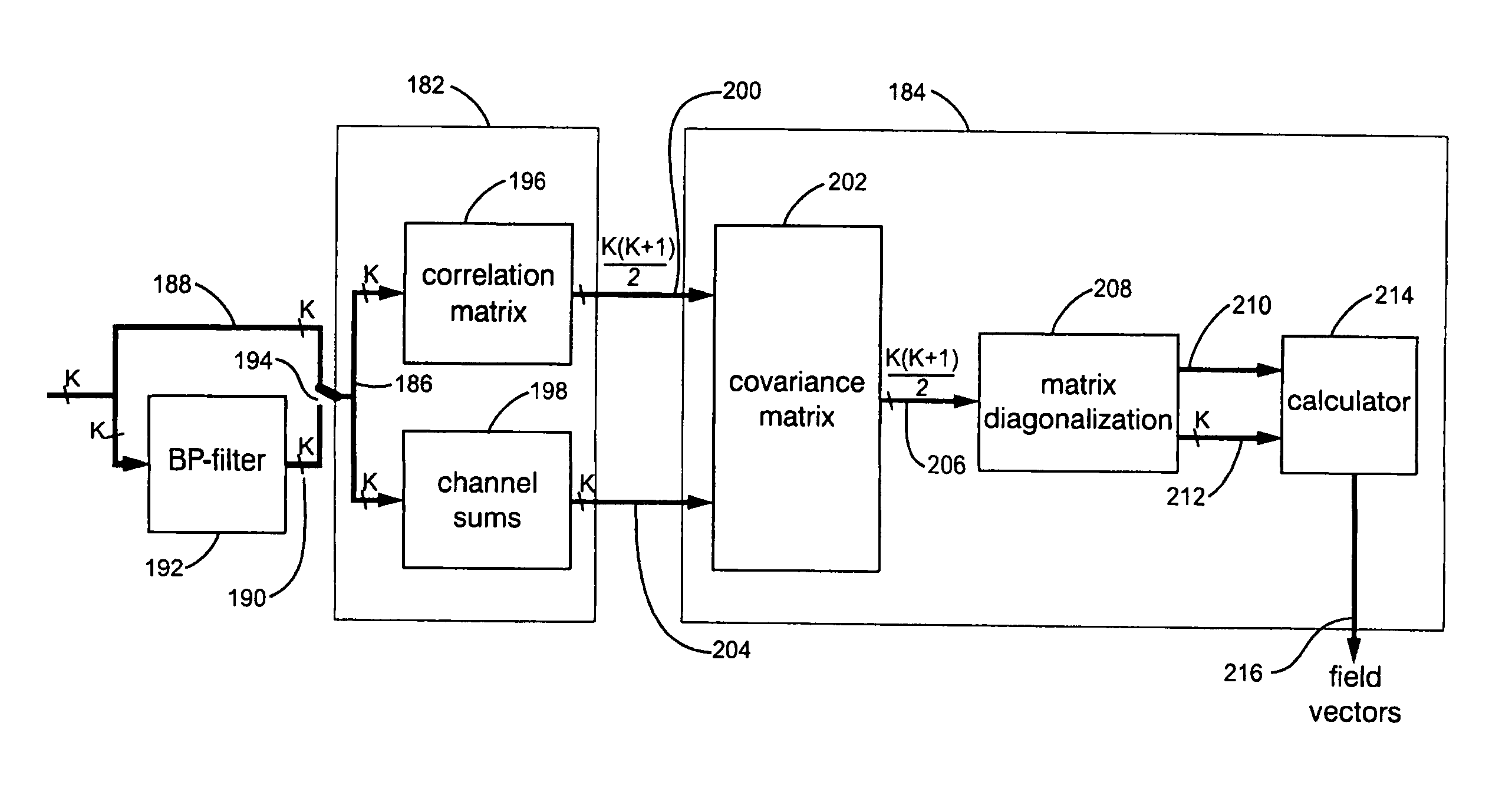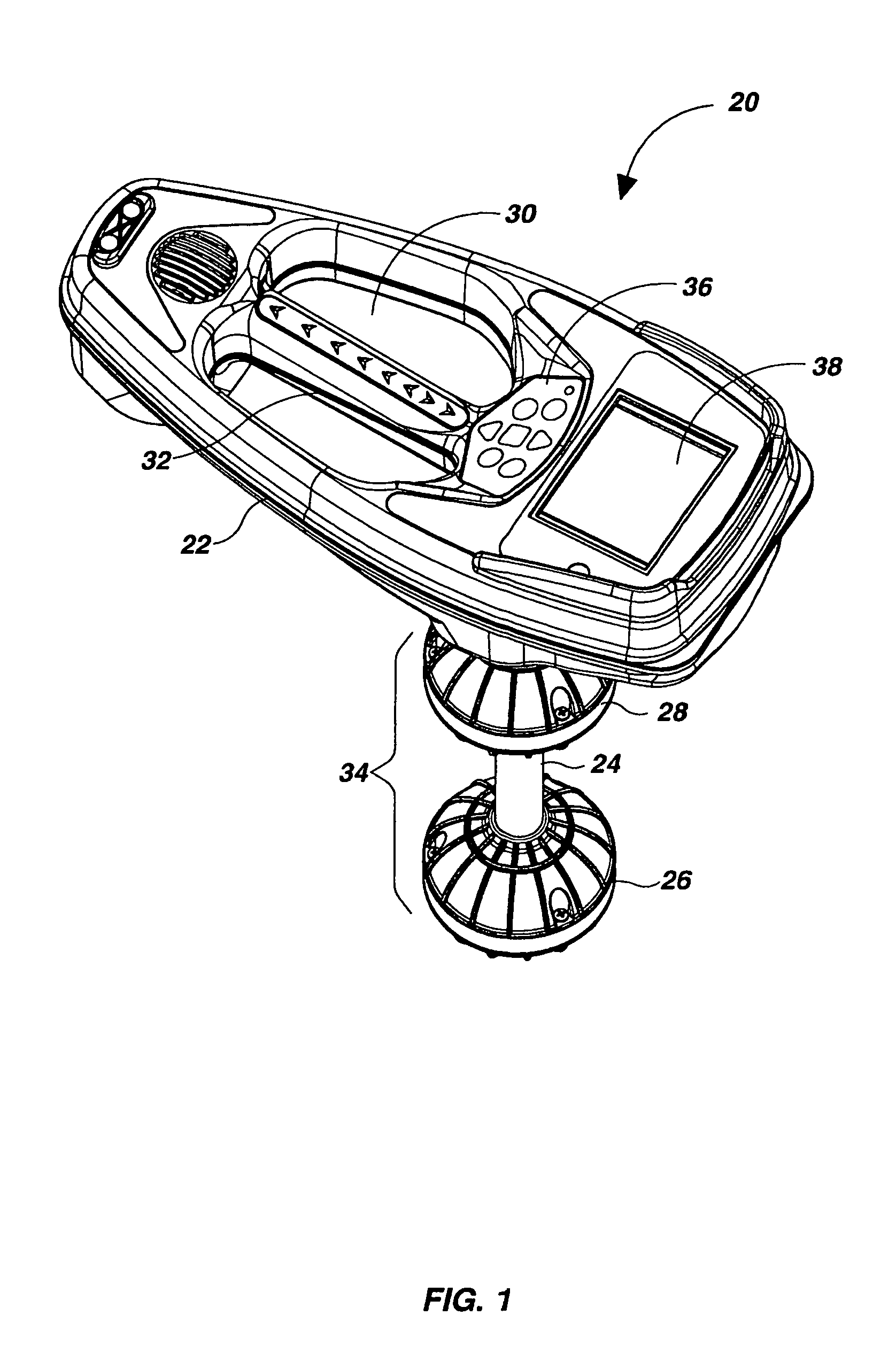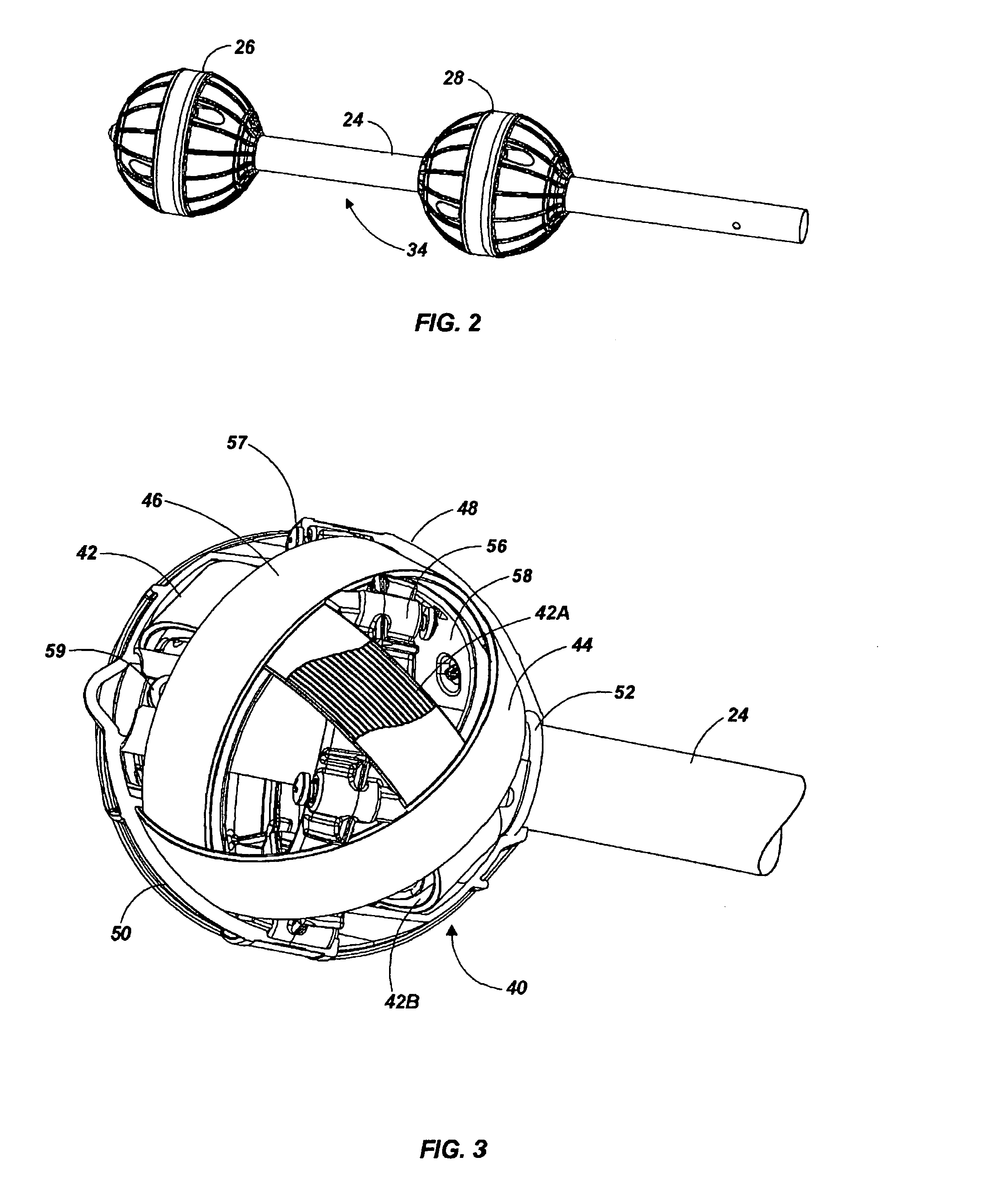Buried object locating and tracing method and system employing principal components analysis for blind signal detection
a blind signal detection and buried object technology, applied in the field of blind signal detection systems, can solve the problems of affecting the comfort and convenience of residents, messy and expensive cleanup efforts, and serious injury and property damage, and achieve the effect of removing the usual ambiguities of broadband electromagnetic emissions
- Summary
- Abstract
- Description
- Claims
- Application Information
AI Technical Summary
Benefits of technology
Problems solved by technology
Method used
Image
Examples
Embodiment Construction
Introduction
[0038]For several detailed discussions of exemplary buried object locator embodiments suitable for use with the system and method of this invention, reference is made to the above-cited commonly-assigned patent applications incorporated herein by reference. For example, FIG. 1 is a perspective view of a battery-powered omnidirectional, portable system 20 useful for locating a buried object by sensing an electromagnetic signal emitted by the buried object. System 20 includes a housing 22 and an elongate member 24 (FIG. 2) that supports spaced apart lower and upper sensor balls 26 and 28, respectively, and connects them to the housing 22. Housing 22 (FIG. 1) includes rigid plastic shells having a large central aperture 30 spanned by a handle portion 32. Lower and upper sensor balls 26 and 28 each include a plurality of electromagnetic sensors (FIG. 3) and together form a sensor assembly 34. Circuit means such as those embodiments described below in connection with FIGS. 5–...
PUM
 Login to View More
Login to View More Abstract
Description
Claims
Application Information
 Login to View More
Login to View More - R&D
- Intellectual Property
- Life Sciences
- Materials
- Tech Scout
- Unparalleled Data Quality
- Higher Quality Content
- 60% Fewer Hallucinations
Browse by: Latest US Patents, China's latest patents, Technical Efficacy Thesaurus, Application Domain, Technology Topic, Popular Technical Reports.
© 2025 PatSnap. All rights reserved.Legal|Privacy policy|Modern Slavery Act Transparency Statement|Sitemap|About US| Contact US: help@patsnap.com



